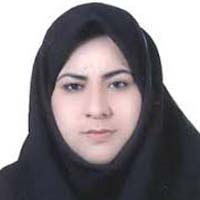Modelling Land-use Changes using MDC, MD and ML Algorithms (Case Study: Midawood-Dalon Watershed)
This research aims to model land-use changes using the MDC, MD, and ML algorithms technique.
Landsat 5 and 8 satellite images were used to compare the MDC, MD, and ML algorithms in five classes between 1987 and 2021 and estimate the model's accuracy. This was done using the overall accuracy coefficient, kappa coefficient, manufacturer's accuracy, user's accuracy, and addition and omission error.
With the change of land-use to residential areas in 2021 compared to 1987, not only were agricultural lands damaged, but it also caused a change in the bed of the studied basin. The flood discharge at the outlet of the basin is reduced, and due to the change and encroachment of the riverbed, the width of the basin decreases. As a result, the capacity of the flood to pass decreases, and the flood intensifies.
The area of residential areas in 1987 compared to 2021 (from 0.08 to 3.12) ) has increased, which has led to instability among the land uses of the studied area. Such changes and developments can have negative effects on the environment and natural resources of the Midawood-Dalon basin. They will cause the spread of risks and damages caused by natural disasters such as river flooding. Also, by comparing the overall accuracy coefficient and the Kappa coefficient, for 1987, the maximum likelihood algorithm with the overall accuracy coefficient (33.34) and Kappa coefficient (0.13), and for 2021, the Mahalanoi distance algorithm with the overall accuracy coefficient (55.29) and Kappa coefficient (0.45) with higher accuracy than other methods.
The land-use changes that have taken place have caused the inappropriate dispersion of land-use (rainy land, pastures, water resources) and human areas in such a way that a part of the basin area has changed use due to the city's physical growth.
-
Prediction of Gully Erosion and identifying factors affecting it using the Maximum Entropy Model and BCC-CSM2-MR climate change models for the years 2020-2040 (case study: Alamarvdasht watershed)
Shima Vosoghi, Reza Zakerinejad *,
Journal of Geography and Planning, -
Investigation of State of Landslide in Tarom Watershed Using Risk-Vulnerability Superimposed Model
*, Shokoh Esteki, Hamide Gholamhaydari
Journal of Geography and Planning,



